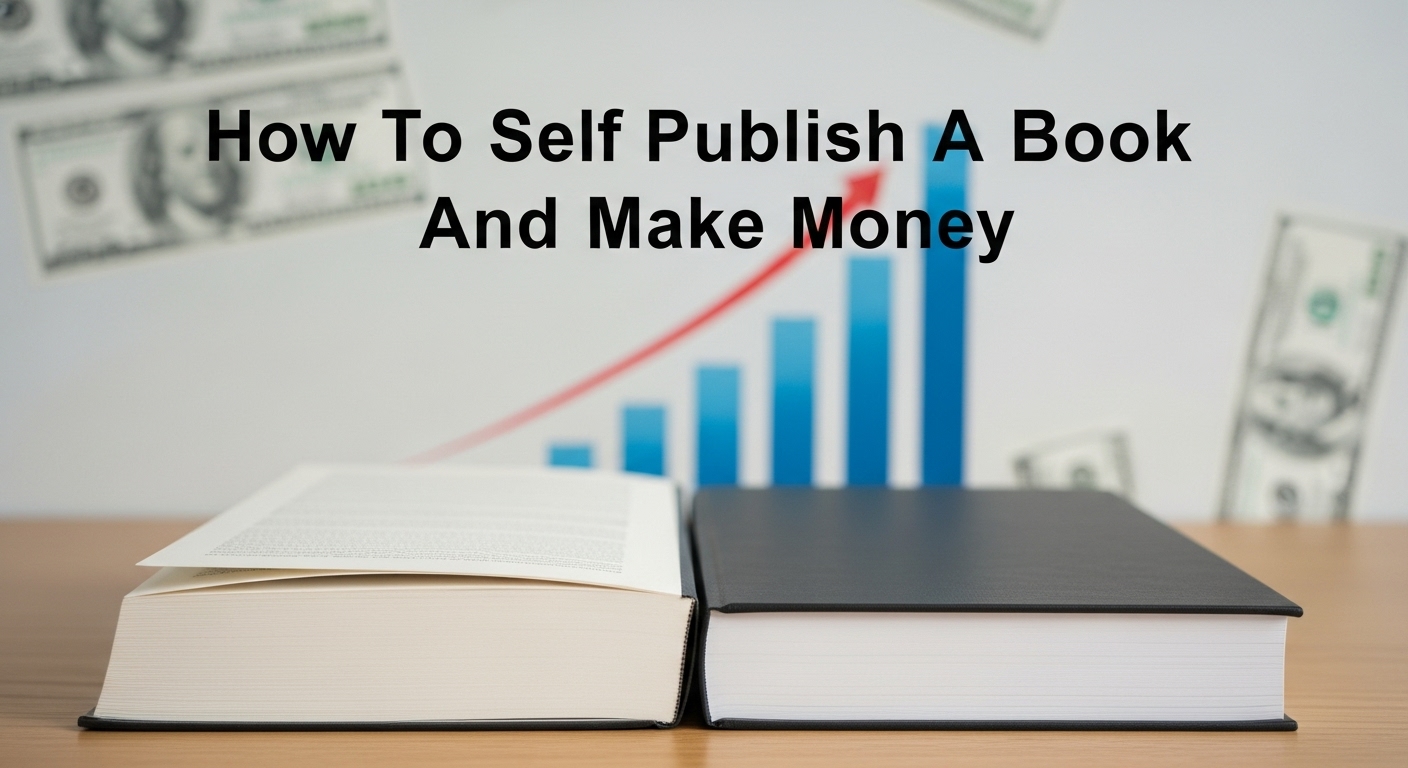
Self-publishing has revolutionized the literary world. Gone are the days when aspiring authors had to rely on traditional publishing houses to bring their stories to life. With the advent of digital platforms and print-on-demand services, writers now have the power to publish their own work and profit from it. However, the journey to successful self-publishing requires more than just uploading a file. It involves strategy, quality work, marketing, and consistent effort.
This guide will walk you through how to self-publish a book and make money — from manuscript to marketplace and beyond.
Table of Contents
ToggleUnderstanding Self-Publishing
Self-publishing means the author takes on the responsibilities of publishing the book themselves. This includes editing, formatting, designing, distribution, and marketing. While this path offers creative control and higher royalty potential, it also demands greater effort and responsibility.
Why Self-Publishing Can Be Profitable
Self-publishing is not just an alternative route — it can be a lucrative one. Here’s why:
- Higher Royalties: Authors can earn up to 70% royalties on digital platforms.
- Faster Publishing: Your book can be available for sale within days of completion.
- Creative Control: You make all decisions, from the cover design to pricing.
- Global Reach: Platforms allow you to reach a worldwide audience instantly.
However, profitability depends on the quality of your book and how well you market it.
Step 1: Write a Quality Manuscript
Focus on Value and Audience
Before thinking about sales, you must deliver value. Whether you’re writing fiction, nonfiction, or memoir, understand your target audience. Ask yourself:
- Who will read this?
- What problem am I solving or what experience am I sharing?
A focused, valuable book appeals to readers and increases your chances of earning money.
Edit and Revise Thoroughly
Self-publishing doesn’t mean self-editing. Once your draft is complete:
- Take a break, then revisit your manuscript with fresh eyes.
- Perform several rounds of revisions.
- Consider hiring a professional editor to ensure your manuscript is error-free and engaging.
A polished book elevates your reputation and encourages good reviews — a key factor in sales.
Step 2: Format Your Book for Publication
Proper formatting makes your book reader-friendly. This includes:
- Front matter: Title page, copyright, acknowledgments, table of contents
- Main content: Chapters with proper headings, page numbers, paragraph spacing
- Back matter: Author bio, additional resources, calls to action
You need two formats:
- eBook format (EPUB or MOBI) for digital platforms
- Print format (PDF with proper margins and bleed) for print-on-demand
While there are tools that allow DIY formatting, hiring a formatting professional can save time and ensure your book meets industry standards.
Step 3: Design a Compelling Cover
Readers do judge books by their covers. A professionally designed cover can make a significant difference in your sales.
Key tips:
- Use genre-appropriate design elements
- Ensure readability of fonts on thumbnails (especially for online sales)
- Make sure it looks good in both print and digital formats
Hiring a professional cover designer is often a worthwhile investment.
Step 4: Choose a Self-Publishing Platform
There are various platforms where you can publish and sell your book. Some allow both digital and print-on-demand options. Look for:
- Royalty rates
- Global distribution
- Ease of use
- Print options (paperback, hardcover)
- Support for ISBN and metadata entry
Most authors publish across multiple platforms to increase reach and maximize income.
Step 5: Set the Right Price
Pricing can make or break your sales.
- eBooks: $2.99 to $9.99 is the sweet spot. It qualifies for higher royalties on many platforms.
- Print books: Price depends on print costs, length, and market. Most fall between $9.99 and $19.99.
Do market research by looking at similar books in your genre. Consider pricing low at launch to attract early buyers and reviews, then raise the price later.
Step 6: Publish and Optimize Metadata
Once your book is ready, upload it to your chosen platforms. You’ll need to provide:
- Book title and subtitle
- Author name
- Book description (your sales pitch)
- Categories and keywords
- ISBN (you can use a free or paid one depending on the platform)
Metadata optimization is crucial. The right keywords and categories help your book appear in relevant searches, increasing visibility.
Step 7: Promote Your Book
Even the best book won’t sell without marketing. Promotion is essential to making money as a self-published author.
Build an Author Platform
Start building your presence online before you publish. This may include:
- Author website
- Email newsletter
- Social media accounts
- Blog or YouTube channel
An engaged audience is more likely to support your work and share it with others.
Use Book Marketing Strategies
- Book Launch Plan: Plan promotional activities around your release date.
- Paid Ads: Consider advertising on social media or book-specific platforms.
- ARC Reviews: Send Advance Reader Copies to get early reviews.
- Book Bloggers and Influencers: Reach out for potential features or reviews.
- Promotional Discounts: Use free or discounted pricing temporarily to increase downloads.
Marketing is ongoing, not a one-time event.
Step 8: Diversify Income Streams
Don’t rely on just one book or one format. Increase your earnings through:
- Multiple Books: Write a series or create related titles.
- Audiobooks: Tap into the growing audio market.
- Foreign Translations: Reach international readers.
- Merchandising: Turn your book content into courses, merchandise, or speaking engagements.
- Bundle Offers: Sell box sets or discounted bundles.
The more products and formats you offer, the more revenue opportunities you have.
Step 9: Track Sales and Adjust Strategy
Most platforms provide sales reports and analytics. Monitor your:
- Units sold
- Royalties earned
- Geographic performance
- Reader reviews
Use this data to refine your pricing, promotion, and content strategy. If a book isn’t selling, experiment with changes to your metadata, cover, or marketing tactics.
Step 10: Keep Learning and Growing
Self-publishing is an evolving industry. Successful authors stay updated on:
- Trends in publishing
- Reader preferences
- New promotional tools
- Algorithm changes on platforms
Join author communities, attend workshops, and read industry blogs to keep improving. Your first book may not make you rich, but with persistence and skill-building, you can turn self-publishing into a sustainable business.
Final Thoughts
Self-publishing offers writers unprecedented freedom, but it requires strategic planning, commitment to quality, and consistent marketing. By understanding the publishing process, investing in your craft, and building an audience, you can not only share your story with the world — but also earn from it.
Remember, self-publishing is a marathon, not a sprint. Treat your book like a business, and the rewards can be well worth the effort.
FAQs
Q1: How much does it cost to self-publish a book?
Costs vary depending on the services you choose. A basic budget might range from $300 to $2,000 covering editing, cover design, and formatting. However, some authors spend more depending on their goals.
Q2: Do self-published authors really make money?
Yes, many do — but success depends on book quality, market demand, and marketing efforts. Some authors earn passive income; others build full-time careers.
Q3: Can I self-publish for free?
It’s possible to publish without spending money, especially on platforms that offer free tools. However, investing in professional services (editing, cover design) significantly increases your chances of success.
Q4: Should I hire a professional editor?
If your goal is to sell books and build a reputation, hiring a professional editor is highly recommended. Readers expect polished, error-free content.
Q5: How long does the self-publishing process take?
From writing to publishing, it could take anywhere from a few weeks to several months depending on the book’s complexity and how much time you devote to each step.





